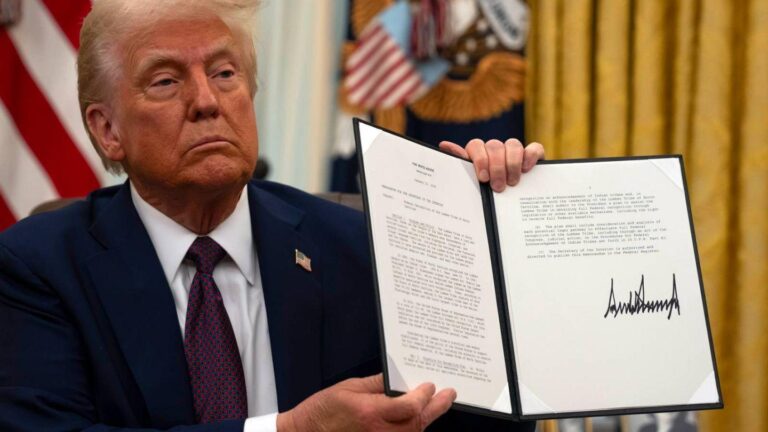In a bold and unprecedented move, former President Donald Trump has issued a new executive order targeting the structure of the U.S. Department of Education. While the directive signals an aggressive push to dismantle key functions of the federal agency, it stops short of fully dissolving the department. The order aims to significantly reduce federal oversight and transfer greater control over education policy to state and local governments, reigniting longstanding debates over the role of the federal government in American education. This latest development marks a critical moment in the ongoing national conversation about education governance and federal authority.
Trump Administration Proposes Major Restructuring of US Education Department
The Trump administration has unveiled a sweeping blueprint aimed at significantly downsizing the U.S. Department of Education. The plan prioritizes transferring many of the department’s responsibilities to the states and local school districts, thereby reducing the federal footprint in education policymaking. While the move stops short of completely eliminating the agency, it proposes a radical shift towards decentralization, arguing that this will foster greater innovation and efficiency in public education.
Key elements of the proposal include:
- Streamlining administrative functions to cut down redundant bureaucratic layers.
- Redirecting funding directly to states with fewer federal stipulations.
- Scaling back federal oversight on curriculum and standardized testing.
| Department Aspect | Current Role | Proposed Change |
|---|---|---|
| Federal Grants | Administered centrally | Distributed to states with minimal strings |
| Accountability Programs | National standards enforcement | Shifted to state control |
| Policy Development | Top-down federal guidelines | Consultative, state-driven approach |
Implications for Federal Education Funding and Policy Oversight
The newly signed executive order signals a profound shift in how federal education funds will be administered, reallocating significant control to states and local districts. This realignment is expected to reshape priorities, with states gaining much more autonomy over spending decisions, potentially leading to a patchwork of diverse educational standards nationwide. While advocates argue this empowers regions to tailor programs to their unique needs, critics warn that removing centralized oversight risks deepening existing disparities in resource allocation and educational equity.
Key changes anticipated under this directive include:
- Decentralization of funding approval processes
- Reduction in federal guidelines and mandates tied to aid
- Heightened responsibility for state-level monitoring and reporting
| Aspect | Federal Role (Pre-Order) | Post-Order Shift |
|---|---|---|
| Funding Allocation | Centralized with formulaic grants | States gain direct allocation control |
| Policy Oversight | Rigorous national standards and compliance checks | States responsible for adherence and audits |
| Program Accountability | Federal performance monitoring | Shift towards state-driven evaluations |
Analysis of Potential Impact on State and Local Education Agencies
The proposed order seeks to reconfigure the role of state and local education agencies by shifting significant regulatory authority away from the federal level. This realignment could yield both opportunities and challenges for these agencies as they navigate a landscape with reduced federal oversight but increased autonomy. State and local bodies may find more flexibility in funding allocations and curriculum decisions, however, they could face greater responsibility for compliance with diverse educational standards without the cohesion currently provided by the Department of Education.
Key considerations impacting state and local education agencies include:
- Operational adjustments: Agencies must prepare for potential restructuring in reporting requirements and funding mechanisms.
- Resource disparities: Variability in local resources might widen, as federal support and standardization efforts lessen.
- Accountability complexities: Ensuring equitable educational outcomes could become more complex without centralized federal guidelines.
| Factor | Potential Impact | Agency Response |
|---|---|---|
| Funding Distribution | Reduced direct federal allocations | Increase state-based fundraising efforts |
| Regulatory Oversight | More local control, less federal interference | Develop customized accountability frameworks |
| Educational Standards | Greater variability across regions | Collaborate regionally to maintain quality |
Expert Recommendations for Navigating Changes in Federal Education Leadership
Amidst the evolving federal education landscape, stakeholders are urged to adopt strategic approaches to ensure continuity and effectiveness. Experts emphasize the importance of maintaining clear communication channels between state and local educational agencies to adapt quickly and efficiently to policy shifts. Empowering school administrators with updated resources and legal guidance will help mitigate uncertainties caused by fluctuating federal oversight. Additionally, fostering collaborations with community organizations can reinforce support systems that are independent of federal department actions but aligned with educational goals.
Specialists also recommend a proactive stance on data management and policy compliance. Establishing robust internal frameworks allows districts to anticipate regulatory changes and react with agility. The following key strategies are suggested by leading consultants:
- Regular Training Sessions: Keep teams informed on the latest legislative developments.
- Scenario Planning: Develop contingency plans to address possible restructuring outcomes.
- Stakeholder Engagement: Collaborate with educators, parents, and policymakers to preserve program integrity.
- Resource Diversification: Seek alternative funding and partnership opportunities beyond federal channels.
| Focus Area | Recommended Action | Expected Benefit |
|---|---|---|
| Communication | Establish dedicated task force | Streamlined updates and rapid response |
| Training | Quarterly policy workshops | Better preparedness and compliance |
| Funding | Explore private partnerships | Increased financial resilience |
In Retrospect
As the Trump administration moves forward with its latest executive order aimed at restructuring the Department of Education, the full impact of these changes remains to be seen. While the department will not be entirely dissolved, the proposed dismantling signals a significant shift in federal involvement in education. Stakeholders across the political and educational spectrum are closely monitoring developments, anticipating how this reorganization could reshape policy and funding priorities in the years ahead. The News Journal will continue to provide updates as this story evolves.




